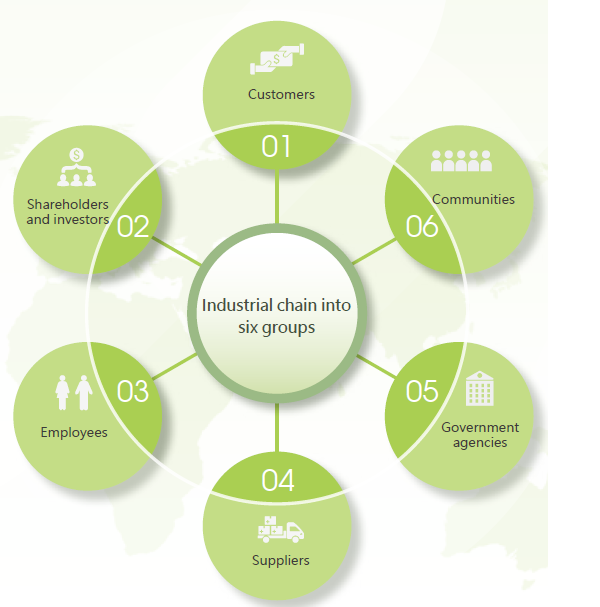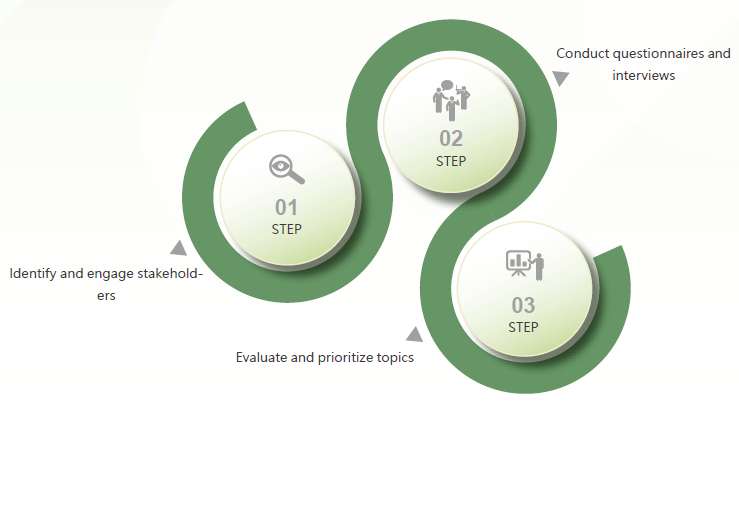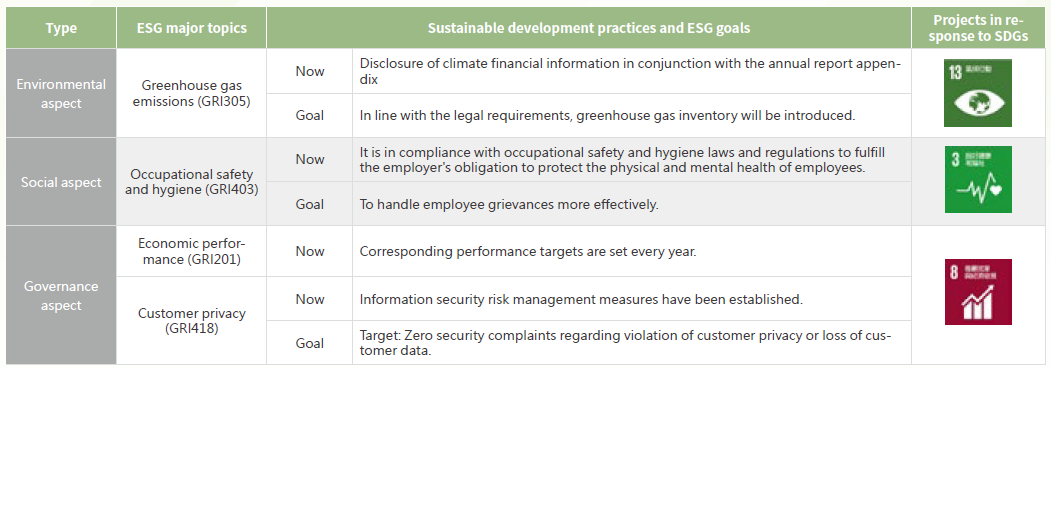- Sustainable Development
- Sustainability Report
- Sustainable Environment
- Sustainable Supply Chain Management
- Friendly Workplace
Stakeholders and Materiality Assessment
Materiality Assessment Process
Silicon Optronics, Inc. (SOI) is committed to establishing a transparent and comprehensive materiality assessment process to ensure that the Company’s sustainability management strategies and reporting align with stakeholder expectations, while effectively addressing external challenges and opportunities. The following outlines the specific steps undertaken by SOI in identifying material issues:
.png)
Industry Value Chain and Stakeholders
Based on the value chain of the IC design industry, Silicon Optronics, Inc. (SOI) identifies its stakeholders into the following categories:
◇ Suppliers: EDA tool providers, IP vendors, and wafer foundries
◇ Customers: End-product manufacturers (such as mobile phone, automotive, and IoT companies)
◇ Regulatory Authorities: Government agencies (e.g., Science Park Administration)
◇ Internal Stakeholders: Employees, shareholders, and management
The Sustainability Task Force of SOI, through internal discussions and in alignment with the five key principles of the AA1000 Stakeholder Engagement Standard, designed and distributed questionnaires completed by the task force members. Based on this framework, SOI identified its six major stakeholder groups within the value chain. These key stakeholders, prioritized by significance, are:
Customers, Shareholders and Investors, Employees, Suppliers, Government Agencies, and Communities.

Stakeholders Major Topics
These 16 topics were then plotted into a materiality matrix, ranked from low to high according to both their impact on Silicon Optronics and their importance to stakeholders.

Significance of Material Topics to SOI and Corresponding Actions
SOI values stakeholders’ opinions and feedback, and has outlined specific actions for the top five material topics as follows:
Sustainable Development Goals (SDGs)

Silicon Optronics, Inc. (SOI) is committed to establishing a transparent and comprehensive materiality assessment process to ensure that the Company’s sustainability management strategies and reporting align with stakeholder expectations, while effectively addressing external challenges and opportunities. The following outlines the specific steps undertaken by SOI in identifying material issues:
.png)
Industry Value Chain and Stakeholders
Based on the value chain of the IC design industry, Silicon Optronics, Inc. (SOI) identifies its stakeholders into the following categories:
◇ Suppliers: EDA tool providers, IP vendors, and wafer foundries
◇ Customers: End-product manufacturers (such as mobile phone, automotive, and IoT companies)
◇ Regulatory Authorities: Government agencies (e.g., Science Park Administration)
◇ Internal Stakeholders: Employees, shareholders, and management
The Sustainability Task Force of SOI, through internal discussions and in alignment with the five key principles of the AA1000 Stakeholder Engagement Standard, designed and distributed questionnaires completed by the task force members. Based on this framework, SOI identified its six major stakeholder groups within the value chain. These key stakeholders, prioritized by significance, are:
Customers, Shareholders and Investors, Employees, Suppliers, Government Agencies, and Communities.

Stakeholders Major Topics
Through materiality analysis conducted with stakeholders, Silicon Optronics, Inc. (SOI) has established its sustainability strategies and long-term goals, which also serve as the guiding framework for compiling its sustainability report. This process aims to drive continuous progress in the areas of Environmental, Social, and Governance (ESG), thereby creating greater shared value for both the Company and society.In the current year, we have identified 16 material topics, which are categorized into three major domains: Economic, Environmental, and Social.
To ensure the reliability of the results, we conducted extensive surveys and collected feedback from both internal and external stakeholders, assessing each topic based on its impact on the Company and the level of stakeholder concern. In this round of assessment, we received a number of valid responses, and based on these, ultimately confirmed 16 material topics with significant impacts.These 16 topics were then plotted into a materiality matrix, ranked from low to high according to both their impact on Silicon Optronics and their importance to stakeholders.
- The top-right quadrant represents issues with the greatest impact on the Company and the highest concern from stakeholders.
- The middle section indicates issues of moderate impact and importance.
- The bottom-left quadrant reflects issues of relatively lower impact and concern.

Significance of Material Topics to SOI and Corresponding Actions
SOI values stakeholders’ opinions and feedback, and has outlined specific actions for the top five material topics as follows:
Sustainable Development Goals (SDGs)


